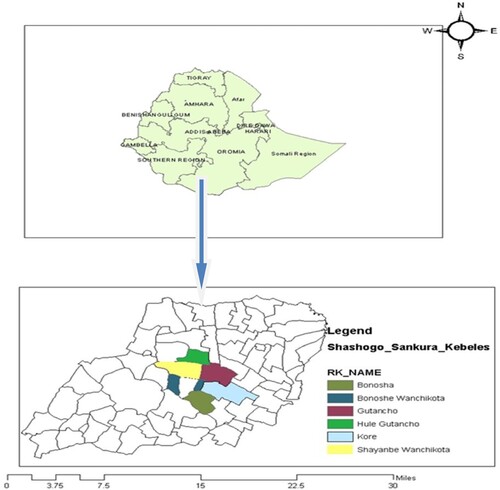Figures & data
Figure 1. Partial view of Calpurnia aurea: (a) tree in maize farm and (b) fresh leaves collected from the study area, (c) leaves dried under the shed and leaf powders for solvent extracts.
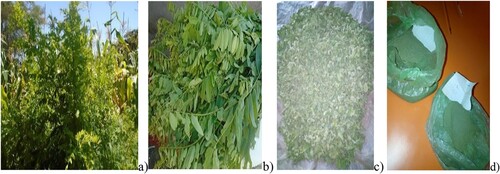
Figure 3. Partial view of the Petri dish chamber used for repellency test of solvent extracts of leaf powder of Calpurnia aurea on the maize weevils and the red flour beetles.
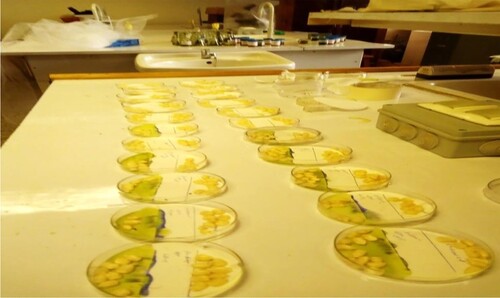
Figure 4. Mean percent repellency of (a) the maize weevils and (b) the red flour beetles due to Calpurnia aurea leaves’ solvent extract treatment at a 2.5% rate. N.B. Means with different colors followed by error bars (±SE) at different days after treatment application are significantly different at p < 0.05, SE = standard error of the mean, h = hour.
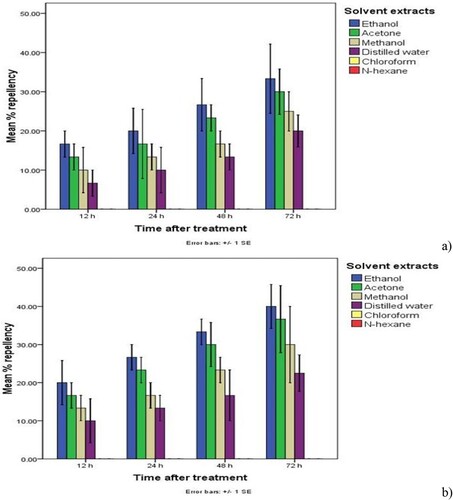
Figure 5. Mean percent repellency of (a) the maize weevils and (b) the red flour beetles due to Calpurnia aurea leaves’ solvent extract treatment at a 5% rate. N.B. Means with different colors followed by error bars (±SE) on different days after treatment application are significantly different at p < 0.05.
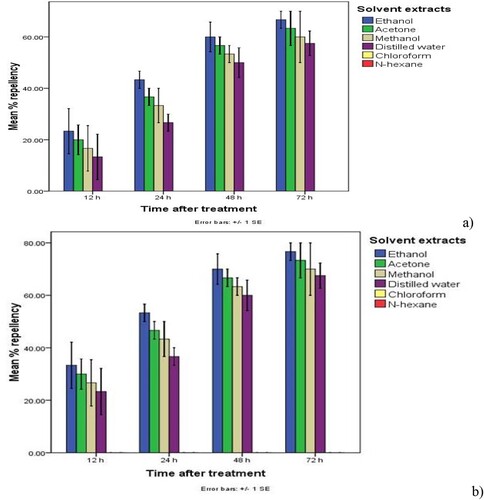
Figure 6. Mean percent repellency of (a) the maize weevils and (b) the red flour beetles due to Calpurnia aurea leaves’ solvent extract treatment at a 10% rate. N.B. Means with different colors followed by error bars (±SE) on different days after treatment application are significantly different at p < 0.05.
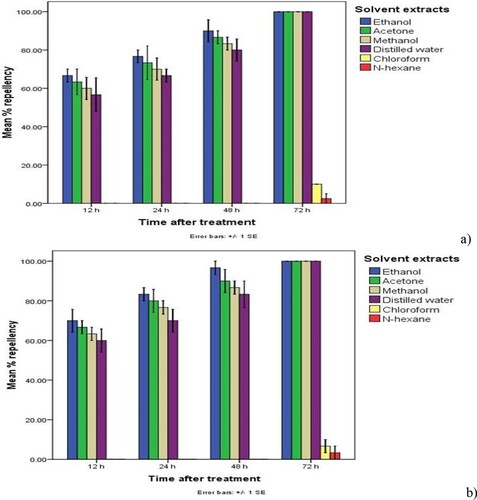
Table 1. Cumulative mean percent repellency and the repellency index of the maize weevils and red flour beetles due to Calpurnia aurea leaves’ solvent extract treatment at different rates at different times after the treatment.
Table 2. Correlation among percent repellency efficacy determining parameters of Calpurnia aurea leaves’ solvent extracts on the maize weevils.
Table 3. Correlation among percent repellency efficacy determining parameters of Calpurnia aurea leaves’ solvent extracts on the red flour beetles.
Data availability statement
The data that support the findings of this study are available in OSF repository [https://osf.io/] at https://osf.io/5xtcs.

